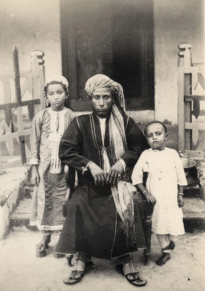All Rights Reserved, 2000 - 2017
Created by:
Torrence Royer
Comments are welcome.
Please leave a note in the public GUEST BOOK
or send a private Email to:
Barghash@msn.com

Oman and Zanzibar
The Zanzibar - Oman Relationship has been an important one throughout history.
A comprehensive representation of that relationship would require much study, and more
space than this website can provide.
The following images can give us only a small glimpse of that shared history.
For more information and further study please see the links below the images.

The
Dhows
came
in
many
sizes,
their
lineage
is
too
ancient
to
determine.
It
was
the
larger
sea-going Dhows that carried an ancient trade from Oman throughout the Indian Ocean.
In Zanzibar, Dhows are said to be "older than the faith."
During the trading season Dhows came to Zanzibar
in the hundreds, from Oman, Arabia and and Persia.



Most of the town participated in this import-export business in some way.
Once
Zanzibar
and
Oman
were
one
domain.
In
1856
their
joint-ruler,
the
great
Sultan
Said
died.
One
of
his
sons
then
became
the
Sultan
of
Oman
and
another
son
became
Sultan
of
Zanzibar. The British supported and enforced this division of power.


Dhows have always connected cousins in both lands.
Over
the
next
century
and
more,
the
Royal
family
in
both
Oman
and
Zanzibar demonstrated continuity, solidarity, and leadership.



Omani
traders
and
sailors
swelled
the
town’s
population
during
the
trading
season.
The sailors were known for spirited displays and sometimes rowdy behavior.

Over
time
many
of
these
visitors
took
up
a
more
permanent
life
on
Zanzibar.
They settled on farms and plantations, set up businesses, and started family life.




Both men and women migrated to Zanzibar from Oman.


In
1961
the
long
reigning
and
much
respected
Seyyid
Khalifa
bin
Haroub
bin
Thuweini
bin
Said
bin
Sultan, died.
His
son,
Sultan
Abdullah,
inherited
the
throne
of
Zanzibar
at
a
time
of
increasing
political
and
social
unrest.
Amidst
the
Cold
War
stress
between
East
and
West,
the
anti-colonial
rebellions
throughout
Africa,
and
struggles
between
Nationalism,
Tribalism,
and
Marxism
at
home,
Zanzibar
was
challenged
like
never
before.
Seyyid
Abdullah
never
had
time
to
fully
deal
with
those
challenges,
he
died after only 2 years on the throne.
His
young
son,
Jamshid
then
became
Sultan.
Seyyid
Jamshid
presided
over
the
achievement
of
Independence
for
Zanzibar
from
Great
Britain.
His
reign
was
only
months
old
when
the
Zanzibar
Revolution swept him from power, at the end of 1963. Thus ended royalty on Zanzibar.


Sultan
Abdullah
bin
Khalifa
Sultan
Jamshid
bin
Abdullah


Sultan’s tomb marker, Zanzibar.
Today many people in Zanzibar and in Oman are rediscovering their shared heritage.
Fortunately,
for
those
interested
in
this
history
there
are
now
many
new
resources
for
information
and
further
research.
Here
is
a
short
list
of
some
of
the
best
work
that
preserves, documents and displays information about the history of Zanzibar and Oman.
10 Recommended Web Sites
•
Sultan Qaboss Cultural Center.
https://www.sqcc.org/
•
Connecting the Gems of the Indian Ocean: From Oman to East Africa.
https://africa.si.edu/50years/oman/
•
Sailors and Daughters, Early Photography and the Indian Ocean.
http://indian-ocean.africa.si.edu/
•
Oman and Zanzibar Virtual Museum.
http://www.omanisilver.com/index.html
•
Zanzibar Stories & History.
http://zanzibar-stories.blogspot.com/
•
The Azanian Sea.
http://www.azaniansea.com/search/label/Zanzibar
•
Trip Down Memory Lane.
http://kwekudee-tripdownmemorylane.blogspot.com/2013/07/swahili-waswahili-
people-famous-and.html
•
Old Houses and Strong Women (A Video).
https://www.youtube.com/watch?v=a72SO4AuLv8
•
Old East Africa Postcards.
http://www.oldeastafricapostcards.com/?page_id=2654
•
Gallery Tours. (A commercial website.)
http://www.gallerytours.net/




















































